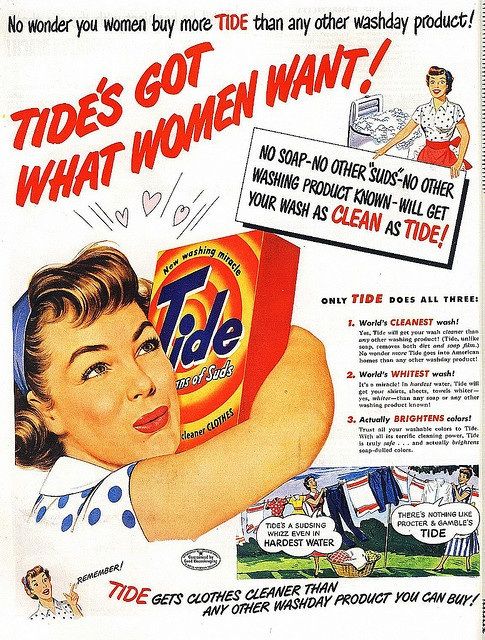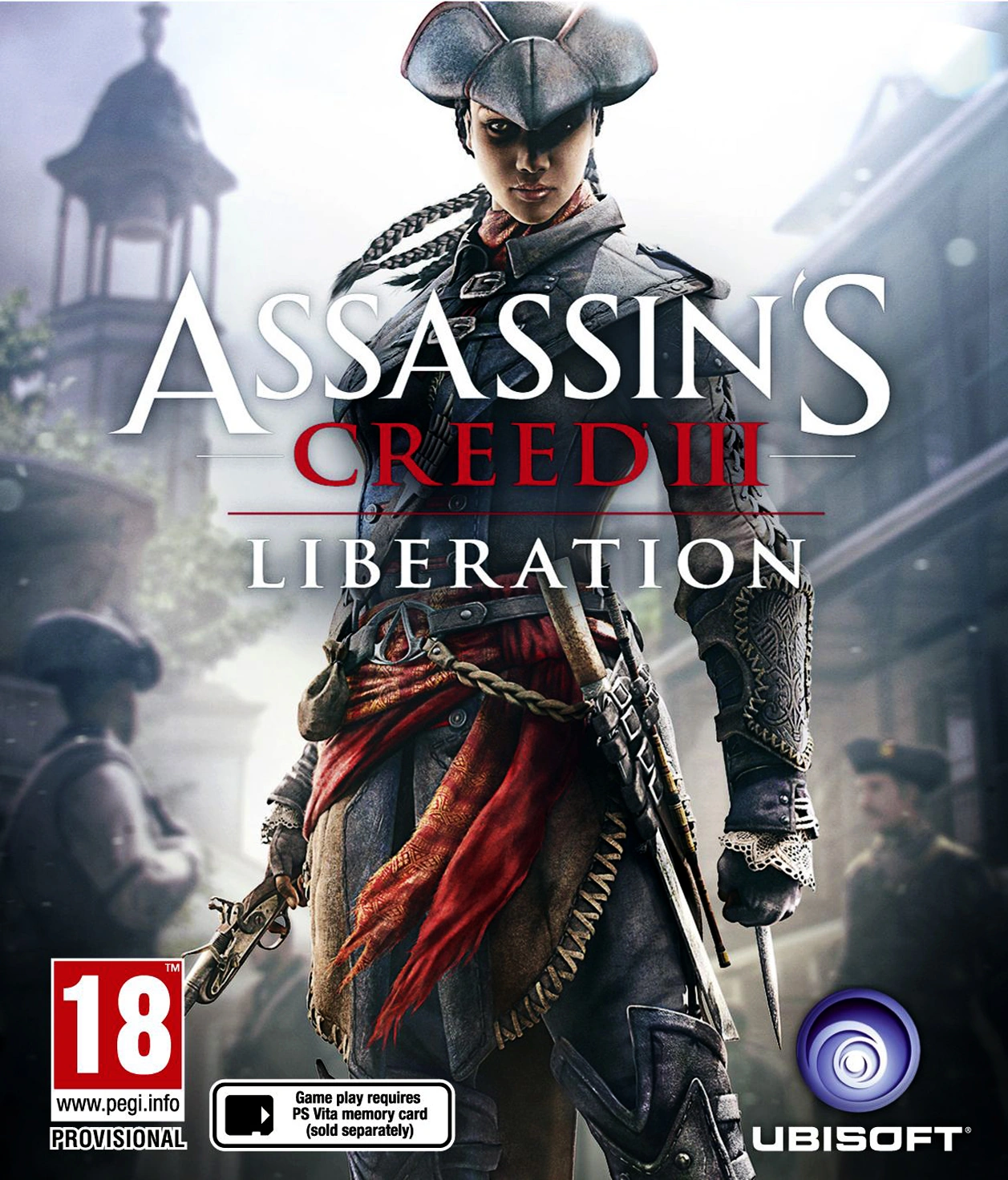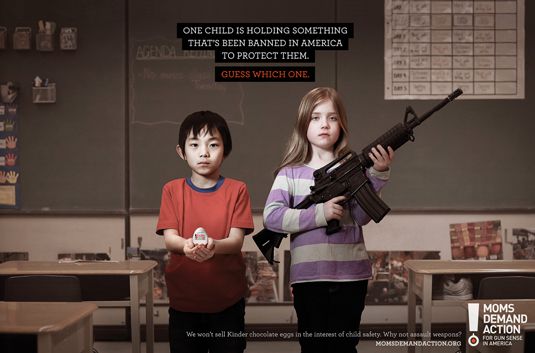Tide advert
The representation of gender in adverts in 1950's show women were defined by their domestic role as wife and homemaker. Men at this time were seen in a patriarchal role as experts in all things, even the home, which was not their domain. Following World War II, women were seen as more respected. Going into the 50's, women came back into a stereotype of being a housewife. The presentation of the housewife in the poster is evident of the ideal woman's image in the 50's: Glamorous, strong, proud and effective at her stay at home role. The make up and the defined facial features of the housewife in the poster are evident of this idea of a "perfect housewife" and what some may relate to the ideal woman in hollywood.
This advert was introduced in the middle of the 50's, when a historical technological boom was occuring. With America coming out of WWII in a stable and good position, products like Tide became much more desired and available due to the boom of technology showing America that products were progressing and they should too. This can be liked to the idea of the American dream as people all around America dreamed of being able to afford products like this and being able to provide the best quality for themselves and their family.
The adverts target demographic is middle-upper class women who want the best for their family. This is shown by the use of exclamation marks and direct vocalisation to the demographic, making sure there's no room to mistake who the Ad could be aimed at and directed to. The line "No wonder you women buy Tide" and "Tide's got what women want!" show that the target for this product is meant to be for women as they were predominantly took the stay at home role and never adverted from this stereotype as although the work ethic and usefulness was shown during WWII, the hierarchy was never changed or tarnished leading to the stereotype of females staying at home not being subverted until many years later.
This advert is a hard selling advert. It uses extremely bright and bold colours to bring as much attention to the advert as possible. The theme of love is evident in this advert with the poster girl hugging the product with hearts drawn above the sign of affection. This links to Barthes theory on semiotics, as the signs and symbols of love and affection link to the idea that buying and using this product will make you fall in love with the results.
This advert was introduced in the middle of the 50's, when a historical technological boom was occuring. With America coming out of WWII in a stable and good position, products like Tide became much more desired and available due to the boom of technology showing America that products were progressing and they should too. This can be liked to the idea of the American dream as people all around America dreamed of being able to afford products like this and being able to provide the best quality for themselves and their family.
The adverts target demographic is middle-upper class women who want the best for their family. This is shown by the use of exclamation marks and direct vocalisation to the demographic, making sure there's no room to mistake who the Ad could be aimed at and directed to. The line "No wonder you women buy Tide" and "Tide's got what women want!" show that the target for this product is meant to be for women as they were predominantly took the stay at home role and never adverted from this stereotype as although the work ethic and usefulness was shown during WWII, the hierarchy was never changed or tarnished leading to the stereotype of females staying at home not being subverted until many years later.
This advert is a hard selling advert. It uses extremely bright and bold colours to bring as much attention to the advert as possible. The theme of love is evident in this advert with the poster girl hugging the product with hearts drawn above the sign of affection. This links to Barthes theory on semiotics, as the signs and symbols of love and affection link to the idea that buying and using this product will make you fall in love with the results.





-nintendo-64.png)


